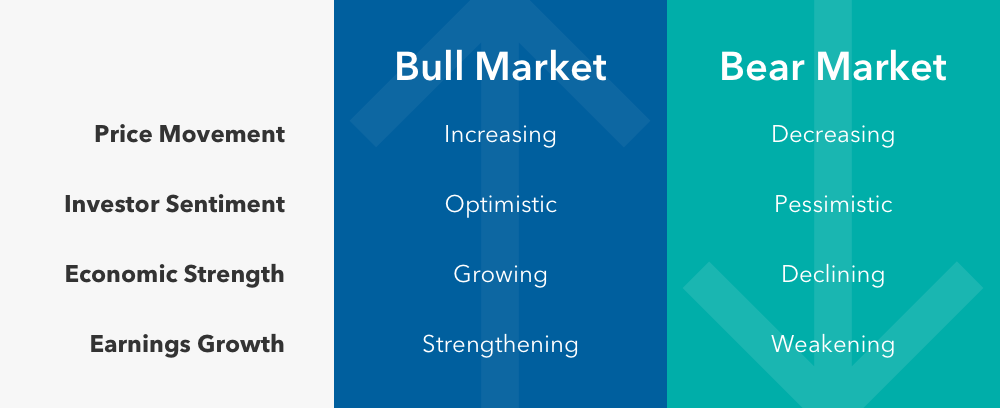Bull vs. bear markets: Knowing the difference can make you a better investor
Are we in a bull market, or has it become a bear? And why do we use those terms to describe the stock markets anyway?
One popular belief is that the terms are based on the animals’ styles of attack. While a bull attacks by thrusting its horns up, a bear attacks by swiping its paws down. These can be likened to market direction, since markets move up, down and sideways.
In bull markets, prices trend up as financial markets show optimism. In bear markets, prices trend down as financial markets show pessimism. Stagnant markets are a result of continual ups and downs, where market gains cancel losses. On average during the past seven decades, bull markets, as represented by the S&P 500 Index, have lasted for about five and a half years, with average cumulative returns of 265%, and bear markets have lasted for one year, with average cumulative returns of –33%.*

Market cycles inevitably include both bull and bear markets. In fact, the exact length and scope of these markets are never clear until after the fact. In hindsight, trying to time these cycles consistently is impossible. As a mutual fund company, Capital Group has navigated various markets cycles for 94 years. Based on our experiences, here are a few tips to help you develop a plan of attack to boost your confidence in all types of markets:
- Create an investment plan and stick to it — through market ups and downs.
- Diversify your assets in a variety of investments to help provide resilience during downturns.
- Invest for the long term, rather than chasing short-term trends.
*Source: Capital Group, RIMES, Standard & Poor's. As of 6/30/24. The bull market that began on 10/12/22 is considered current and is not included in the "average bull market" calculations. Bear markets are peak-to-trough price declines of 20% or more in the S&P 500 Index. Bull markets are all other periods.
September 3, 2024
Other resources
S&P 500 Index is a market capitalization-weighted index based on the results of approximately 500 widely held common stocks. This index is unmanaged, and its results include reinvested dividends and/or distributions but do not reflect the effect of sales charges, commissions, account fees, expenses or U.S. federal income taxes.
Past results are not predictive of results in future periods.